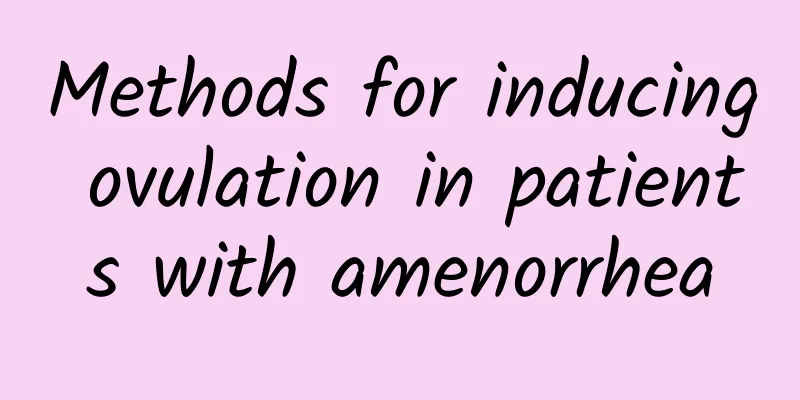Methods for inducing ovulation in patients with amenorrhea

|
For amenorrhea patients who desire fertility and have not lost ovarian function, hormones or analogues can be used to induce ovulation. Principles of inducing ovulation 1. For patients with pituitary insufficiency, follicle-stimulating hormone extracted from urine of postmenopausal women can be used to promote follicle development and secrete estrogen, and combined with chorionic gonadotropin for treatment, which has a high ovulation success rate; 2. For patients with normal pituitary and ovarian function but hypothalamic insufficiency or disharmony, chlorphenamine can be used to correct the function of the hypothalamic pituitary-ovarian axis and induce ovulation; 3. For amenorrhea caused by insufficient endogenous luteinizing hormone-releasing hormone, the use of pulse micro-luteinizing hormone-releasing hormone injection to induce ovulation has a good effect; 4. For patients with hyperprolactinemia, bromocriptine can inhibit the effect of prolactin, restore the secretion of gonadotropin, and thus induce ovulation. Drugs to induce ovulation 1. Take ethylphenol orally, 0.25-0.5 mg each time, once a night, for 20 consecutive days. It can be repeated 8-10 days after stopping the medication, for 3 consecutive cycles. 2. Inject progesterone intramuscularly, 20 mg each time, once a day, for 3 consecutive days. Withdrawal bleeding may occur 3 to 7 days after stopping the drug. If the next menstruation does not come when it is due, the injection can be repeated for 1 to 3 cycles. 3. Take ethylphenol orally, 0.25-0.5 mg each time, once a day, for 20 consecutive days. 16 days after stopping the drug, inject progesterone 10-20 mg, once a day, for 5 consecutive days. Vaginal bleeding may occur 3-7 days after stopping the drug. It can be used for 3 consecutive cycles, but attention should be paid to the dosage and time of the medication to avoid menstrual disorders and affect the efficacy. 4. Take nialestradiol orally, 5 mg each time, once a month. After the symptoms improve, the maintenance dose is 1-2 mg each time, 1-2 times a month. However, it should be used with caution in patients with asthma, heart and kidney dysfunction, depression, migraine, diabetes, abnormal liver function, thyroid disease, uterine fibroids, etc. |
<<: 3 major hazards of dysmenorrhea
>>: 2 Diet Tips for Patients with Menstrual Disorders during Menopause
Recommend
Causes of Trichomonas vaginitis
Trichomonas vaginitis is relatively common in cli...
Will cervicitis turn into cancer if it is not treated?
If cervicitis is not treated in time, it may incr...
How is adenomyosis diagnosed?
All women are particularly afraid of diseases suc...
Is it expensive for patients with endometrial tuberculosis to see a traditional Chinese doctor?
The key to treatment is early stage. Some patient...
Remember these 7 tips to lose weight and lose weight more easily
As many as 68% of women believe that perseverance...
The best hospital for functional uterine bleeding
Functional uterine bleeding, also known as DUB, i...
How to completely cure endometrial tuberculosis
Endometrial tuberculosis is a disease that many w...
Dietary considerations for patients with uterine effusion
Uterine effusion is one of the common gynecologic...
Dietary adjustment for functional uterine bleeding in adolescence
Dysfunctional uterine bleeding is one of the comm...
Nursing care for complications of cervical precancerous lesions
We must actively grasp the postoperative care mea...
What is the cause of ovarian cysts? Will ovarian cysts cause patients to have miscarriages?
Some ovarian cysts start out solid, grow bilatera...
Can eating golden needles help you conceive a boy? 3 Cool Summer Daylily Recipes
Daylily, also known as "day lily", is l...
What are the symptoms of ovarian cysts and what causes them
What are the symptoms of ovarian cysts? What caus...
Several aspects to pay attention to in the care of dysmenorrhea
During menstruation, dysmenorrhea is one of the m...
Briefly describe the causes of candidal vaginitis
Candidal vaginitis is a disease caused by fungal ...









